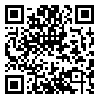1. Piao X, Ma X, Zhang C, Managi S. Impact of gaps in the educational levels between married partners on health and a sustainable lifestyle: evidence from 32 countries. Sustainability. 2020;12(11):4623. [
DOI]
2. Irastorza N. Sustainable marriages? Divorce patterns of binational couples in Europe versus North America. Ethnicities. 2016;16(4):649–83. [
DOI]
3. Fayyaz Saberi MH, Toozandehjani H, Samari AA, Nejat H. Predicting marriage stability based on marital adjustment and sexual self-disclosure by the mediating role of emotional intelligence. Research in Clinical Psychology and Counseling. 2020;9(2):56–70. [Persian] [
DOI]
4. Cobbinah JE, Osei-Tutu EM. Pre–marital counselling and sustainability of marriages in contemporary Ghanaian society. International Journal of Political Activism and Engagement. 2019;6(1):52–64. [
DOI]
5. Goldberg JS, Carlson MJ. Parents' relationship quality and children's behavior in stable married and cohabiting families. J Marriage Fam. 2014;76(4):762–77. [
DOI]
6. Shademani F. Predicting marital satisfaction based on parental marital satisfaction and healthy family–of–origin. Quarterly Journal of Family and Research. 2020;17(1):145–63. [Persian] [
Article]
7. Fincham FD, May RW. Infidelity in romantic relationships. Curr Opin Psychol. 2017;13:70–4. [
DOI]
8. Jamshidi A, Sahebdel H, Shakory Z. Communicational beliefs and degree of marriage instability among the female and male married. Family Pathology, Counseling and Enrichment Journal. 2017;2(2):1–14. [Persian] [
Article]
9. Li C, Jiang S, Fan X, Zhang Q. Exploring the impact of marital relationship on the mental health of children: does parent–child relationship matter? J Health Psychol. 2020;25(10–11):1669–80. [
DOI]
10. Huang CY, Sirikantraporn S, Pichayayothin NB, Turner-Cobb JM. Parental attachment, adult-child romantic attachment, and marital satisfaction: an examination of cultural context in Taiwanese and Thai heterosexual couples. Int J Environ Res Public Health. 2020;17(3):692. [
DOI]
11. Refahi Z. Relation between attachment styles and marital conflicts through the mediation of demographic variables in couples. International Journal of Medical Research & Health Sciences. 2016; 5(11):643–52.
12. Mohammad Sharooni R, Shokri O, Hosseinzadeh Taghvaei M, Danesh E, Borjali A. The modeling of structural relationship of marital conflict concerning attachment styles, narcissism sensation seeking, and marital burnout in couples. Middle Eastern Journal of Disability Studies. 2020;10:23. [Persian] [
Article]
13. Jalovaara M, Kulu H. Separation risk over :union: duration: an immediate itch? Eur Sociol Rev. 2018;34(5):486–500. [
DOI]
14. León F. For-me-ness, for–us–ness, and the we–relationship. Topoi. 2020;39(3):547–58. [
DOI]
15. Gildersleeve S, Singer JA, Skerrett K, Wein S. Coding "we–ness" in couple's relationship stories: a method for assessing mutuality in couple therapy. Psychother Res. 2017;27(3):313–25. [
DOI]
16. Skerrett K. Resilient relationships: Cultivating the healing potential of couple stories. In: Creating connection: a relational–cultural approach with couples. New York, US: Routledge/Taylor & Francis Group; 2013. pp: 45–60.
17. Sanagoei Zadeh M. Identification of factors related to marriage stability in Iranian Studies (2010 – 2020). Journal of Public Policy. 2021;7(3):261–77. [Persian] [
DOI]
18. Ghasemi V. Estimation of optimum sample size in structural equation modeling assessing its adequacy for social researchers. Iranian Journal of Sociology. 2011;12(4):126–47. [Persian] [
Article]
19. Edwards JN, Johnson DR, Booth A. Coming apart: a prognostic instrument of marital breakup. Family Relations: An Interdisciplinary Journal of Applied Family Studies. 1987;36:168–70. [
DOI]
20. Ghezelseflo M, Hashemi S. Prediction of marital instability: couple intimacy and relational maintenance strategy. Biannual Journal of Applied Counseling. 2018;8(1):1–18. [Persian] [
DOI]
21. Sanaei Zaker B. Family and marriage measurement scales. Tehran: Be'sat Publication; 2008.
22. Bell M, Billington R, Becker B. A scale for the assessment of reality testing: reliability, validity, and factorial invariance. J Consult Clin Psychol. 1985;53:506-11. [Persian] [
DOI]
23. Bell MD. Bell Object Relations and Reality Testing Inventory (BORRTI) Manual. US, Los Angeles: Western Psychological Services; 1995.
24. Hadinezhad H, Tabatabaeian M, Dehghani. A preliminary study for validity and reliability of Bell Object Relations and Reality Testing Inventory. Iranian Journal of Psychiatry and Clinical Psychology. 2014;20(2):162–9. [Persian] [
Article]
25. Mesgarian F, Azadfallah P, Farahani H, Ghorbani N. Psychometric properties of Bell Object Relations Inventory (BORI). Clinical Psychology and Personality. 2020;15(2):193–204. [Persian] [
DOI]
26. Cheraghi M, Mazaheri MA, Mootabi F, Panaghi L, Sadeghi MS, Salmani K. Family triad systemic scale: an instrument for assessment of relationships between couple and families of origin. Journal of Family Research. 2017;13(3):343–60. [Persian] [
Article]
27. Sharifzadeh M, Safari S, Heidari chiane A. Fitting and path analysis knowledge management model and its role in the creativity faculty members (the case of implementing universities distance education). Education Strategies in Medical Sciences. 2017;10(3):172–9. [Persian] [
Article]
28. Ghorbani A, Jomenia SJ. The role of social factors (family, school, peer group) in socialization of students in Golestan province. Journal of Applied Sociology. 2018;29(2):113–28. [Persian] [
DOI]
29. Jalali I, Ahadi H, Kiyamanesh AR. The effectiveness of family training based on Olson approach for family adaptation and cohesion. Psychological Methods and Models. 2016;7(24):1–22. [Persian] [
Article]
30. Khakpour I, Nazari AM, Zahra Kar K. The prediction of marital adjustment based on triangulation and structure of power in a family. Thoughts and Behavior in Clinical Psychology. 2014;9(33):37–46. [Persian] [
Article]
31. Modares M. Studying the relationship between adult attachment style to parents with stress, anxiety and depression. Journal of Fundamentals of Mental Health. 2011;13(50):194–202. [Persian] [
DOI]
32. Mehman Navazan A, Ali Akbari Dehkordi M, Kakojoybari AA. Impact of attachment styles, family cohesion and adaptability on the level of resiliency as it relates to the feeling of homesickness among freshman students living in dormitories of Alzahra University. Women's Studies (Sociological & Psychological). 2014;12(4):173–204. [Persian]
33. Jwaheri Mohamadi M, Klantar Kosheh SM, Farah Baksh K. The comparison of marital satisfaction between traditional and non–traditional couples in Tehran. Family Counseling and Psychotherapy. 2015;5(2):123–42. [Persian] [
Article]





